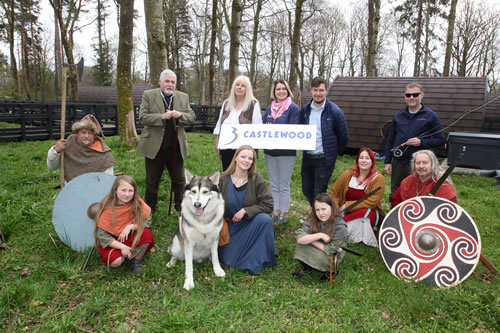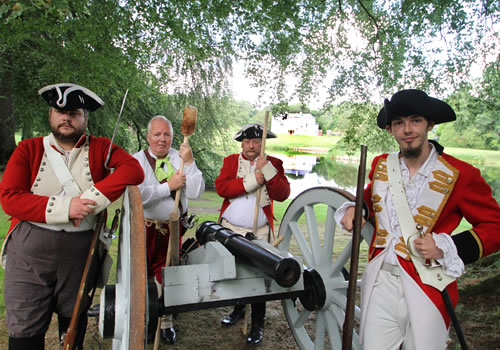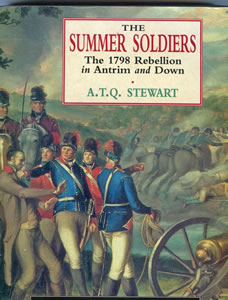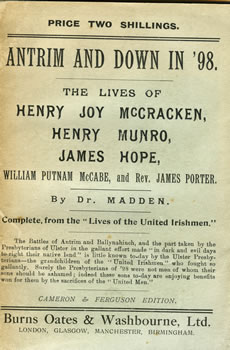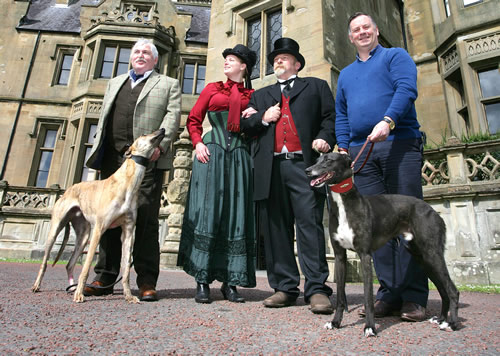
 |
||
 |
||
Living HistoryTHE LIVING HISTORY VILLAGEAs part of our family entertainment for families we believe in bringing local history to life in our Living History Village sited in the evocative setting of the old ruined castle on the shores of Lough Neagh. ThIs Year, working with George Logan and his team from Living History Ireland, the major focus will be on the Vikings who amongst other attacks on Ireland, sailed up the Bann and gave rise to the legend of the 'Red Hand of Ulster and the O'Neills.' Although other timelines from the Vikings, through the Battle of Antrim in the 1798 rebellion to World War 2 will be also featured in the Living History Festival. Details of the history of Shanes Castle can be seen on history section of shanescastle.com
For 2022 CastleWood Holiday Park situated beside the estate are sponsoring the fair and quite appropriately have accommodation available including Scandinavian Pods ( with hot tubs) see https://blairsholidayparks.com/locations/castlewood-holiday-park/ THE LEGEND OF THE RED HANDThe red hand is a main feature of the O'Neill coat of Arms, and can be seen clearly in John O'Neills Coat of Arms. In times gone by, it is said that a Viking Ship was approaching the coast of Ulster and the Captain told his crew that the first sailor who touched the shore with his right hand would have it for himself. Two sailors then lowered themselves onto coracles and rowed for the shore. One of the sailors was Niel, a well known Scandanavian name. He was losing the race but was very keen to have the land, so he cut off his right hand and threw it onto the shore. In the process his hand became a little red. The Red Hand of O’Neill eventually became the emblem of Ulster. When King James the 1st "Planted' Ulster with British people he created the order of Baronet which he sold for £1,000 a time. He chose the red hand as the insignia of the order but unfortunately one of the heralds used the left hand instead of the right hand and there has been confusion ever since. The right hand is correct.
THE BATTLE OF ANTRIMIn 2014 the Great Game Fairs of Ireland as part of their commitment to bringing 'history to life' mounted a Battle of Ballynahinch re-enactment in Ballynahinch town and at Montalto Estate where an encampment was created. The Battle of Ballynahinch was arguably the last military action in the Ulster rising as part of the 1798 rebellion. In 2016 with support from the Ulster Scots Agency, the Battle of Ballynahinch was once again staged in Ballynahinch town and Montalto and a similar Battle of Antrim re-enactment in the grounds of Antrim Castle and encampments at the Fair at Shanes Castle. Since then we have continued to feature facets of this battle in the Living History Village and in the main arena. This year with black powder supplies limited this will not feature as heavily but we hope to bring it back stronger in 2023.
A summary of the Battle of AntrimThe outbreak of the 1798 rebellion in Leinster on the 23rd May had prompted calls for the United Irishmen in the North to rise in support of their southern comrades. However, the leadership of the organisation in Ulster had been severely compromised through infiltration by British spies and the new leadership was very cautious about rising without the promised French support. After a delay of about a fortnight while rebels in the South engaged British forces, the rank and file United Irish membership circumvented the leadership in Antrim and Henry Joy McCracken was elected as their leader. McCracken, together with James Hope, quickly formulated a plan to attack and seize all government outposts in county Antrim and then for the main attack to fall on Antrim town. Then using artillery seized at Antrim, the rebels were to march on Belfast in conjunction with the United Irish rebels in County Down. McCracken had high hopes that many members of the militia would desert and join him as disaffection was believed to be widespread, evidenced by the execution of four of the largely Roman Catholic Monaghan militia for treason in Belfast in May On 6 June McCracken issued a proclamation calling for the United army of Ulster to rise. He knew that the magistrates were due to meet in Antrim town on 7 June. He sent orders to all the United Irish units in the county to appear in arms that day and overwhelm their local garrisons. He arranged for Randalstown, Larne and Ballymena to be attacked, while he and James Hope, with the men of Belfast and South Antrim, would lead the main attack on Antrim town. Late on 6 June he issued his famous order: 'Army of Ulster, tomorrow we march on Antrim.
The initial plan met with success, as the towns of Larne, Ballymena, and Randalstown were taken and the bridge at Toome damaged to prevent the government rushing reinforcements into Antrim from west of the Bann. Thousands of rebels were in arms on the peninsula of Islandmagee and in the area about Ballycarry, moving westward towards Donegore. Further north on the coast a host assembled on Bellair Hill near Glenarm, commanded by the Presbyterian minister, the Revd Robert Acheson, and in the centre of the county disciplined bodies of armed men surged into Ballymena, where they were joined by the men of North Antrim, led by young Richard Caldwell. Initially 9-10,000 are reported to have rallied to McCrackens call to rise. His plan was to have four columns advancing on the town from different directions. His own column was to enter the town at the Scotch Quarter; a second column by the Carrickfergus Road; a third by Patie's lane and the fourth via Bow Lane. The garrison under Major Daniel Seddon numbered only c 150 including a company of Antrim yeomanry, a troop of the 22nd Dragoons and 40 armed civilians supported by Lumley's cavalry and the rebels had a fairly massive advantage in terms of combatants. However the garrison also had four artillery pieces, while rebels only had one cannon poorly mounted on a cart and which in fact only managed to fire one shot.
The delay in the rebel attack had allowed General Nugent to gain information from informants and at daylight Nugent alerted Seddon, who commanded the small garrison in Antrim, and promised to send him reinforcements. Taking a carefully calculated risk, he dispatched a mixed column of regulars, militia and yeomanry from Belfast, and another from General Goldie's command at Lisburn, in the hope of scotching the rebellion on the first day without endangering Belfast. Despite his theoretical overwhelming superiority in numbers, McCracken waited far too long before entering Antrim through the Scotch Quarter and the tiny garrison had plenty of time to prepare for a doughty defence. And with delays and confusion amongst the rebels probably less than 4,000 rebels actually engaged with the military forces. The garrison formed themselves in a strong defensive position at the base of the demesne wall of Antrim Castle, with artillery to the front and cavalry to the rear with their flanks anchored by the Market House and Presbyterian Meeting House. The cavalry led by Colonel William Lumley, commander of the 22nd Dragoons, had obtained permission to move ahead of the main relief column heading for Antrim and had entered the town by the Massereene Bridge. The main rebel attack took place at about 3pm when the first rank of attackers was met by cannon fire which caused them to withdraw. This encouraged Lumley who thought it was a general retreat to make the mistake of launching a cavalry charge at the rebels. However the rebels had retreated in orderly fashion and had reformed in a strong defensive position. They met and routed the cavalry with both musket fire and particularly pike men. The dragoons took casualties, Lumley was severely wounded, and two officers killed, and his cavalrymen were raked with musket fire by Hope's sharpshooters as they retreated. The rebels encouraged by this attacked Seddon's defensive position in the town so fiercely that the troops began to withdraw and in the confusion, the Lord O'Neill, was fatally wounded. A rebel attempt to seize the artillery was only narrowly beaten off allegedly with the help of a strapping local lady Peggy Gordon. Seddon, then withdrew his men behind the walls of Antrim Castle and from this shelter beat off several attacks to dislodge him including a number of flanking exercises. At a crucial stage of the battle there was confusion in the ranks of the Northern Column who thought the bugle call for the retreat of the dragoons was the order to charge and fearing that the town was in loyalist hands and they were about to be attacked the whole column broke up and many fled. McCracken attempted to stop the panic but this spread and apart from Hope holding the church yard many of the rebels started to disperse. A local man John Mc Givern assembled 53 rebels with muskets to attack the yeomanry as panic spread. At this critical juncture, British reinforcements from Belfast arrived outside the town and assuming it to be held by the rebels, began to shell it with their artillery. This prompted more desertions and the rebel army began to disintegrate but their withdrawal was protected by a small band of rebels later named 'the Spartan Band' under James Hope who fought a successful rearguard action from the church grounds along the main street, which allowed the bulk of the rebels to withdraw safely. When the military entered the town they began a spree of looting, burning and murder of whom the most enthusiastic perpetrators were reported to be the Monaghan militia who were anxious to prove their loyalty and expunge the shame of the recent executions of their comrades for sedition. McCracken, Hope and their remaining supporters withdrew northwards establishing camps of ever dwindling size along the route of their retreat until news of the defeat at Ballynahinch caused their final dispersion. McCracken was arrested by yeomen on the 7th July and was hanged in Belfast on 17th July having refused an offer of clemency in return for informing on his comrades. Bearing in mind the number of combatants involved casualties were surprising light. It is reported from military estimates that between 150 and 200 rebels were killed. It is reported that two officers were killed but there is no report of how many other soldiers were killed. Certainly it is reported that the force relieving Antrim ' did not lose a single man.' The Game Fair's Living History Village will also feature a typical encampment of the period and similar re-enactments. The public can also speak with the re-enactors and examine the sort of weaponry used in the battle. Bibliography
Irish Sporting Icons brought to LifeThis year two Irish Sporting icons the famous greyhounds Master McGrath and Mick the Miller will also be 'brought to life' at the fairs at Shanes Castle and Birr Castle with challenge races named in their honour. These were launched at a reception in Brownlow House, Lurgan, the home of Lord Lurgan the owner of Master McGrath.
A specially commissioned painting of the two dogs by John R Moore will be on display at both fairs. Limited edition prints will be available.
|
||
| Ireland's Real Game Fairs | © Irish Game Fair | |





